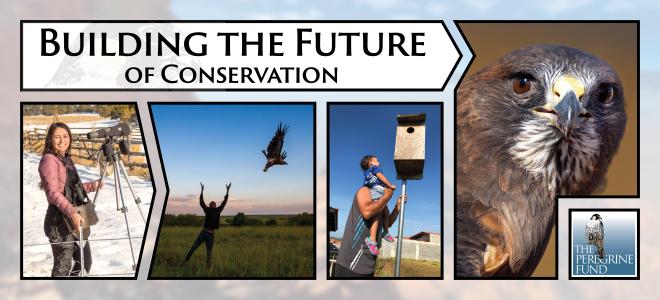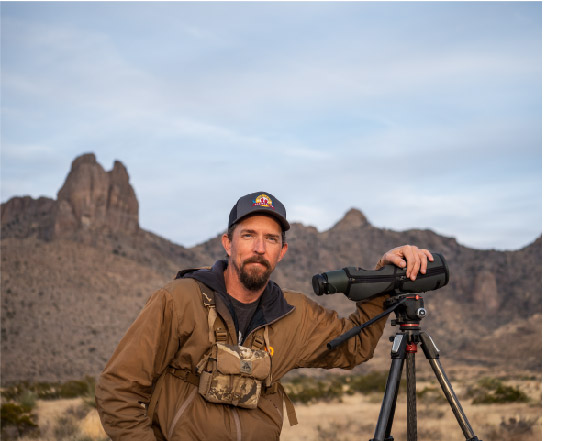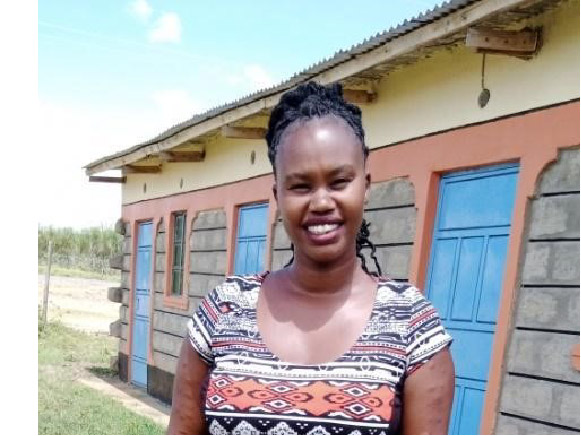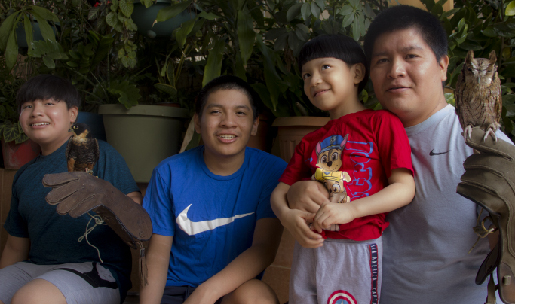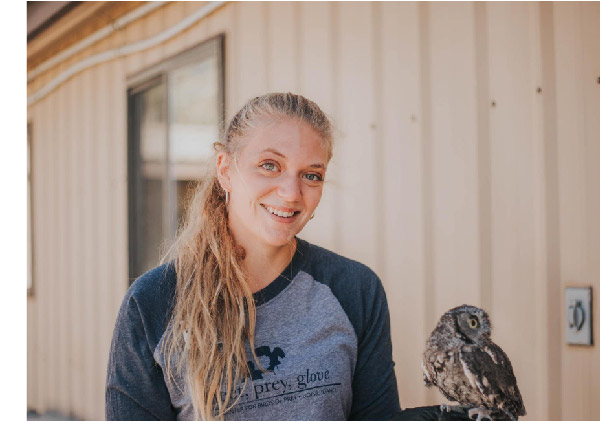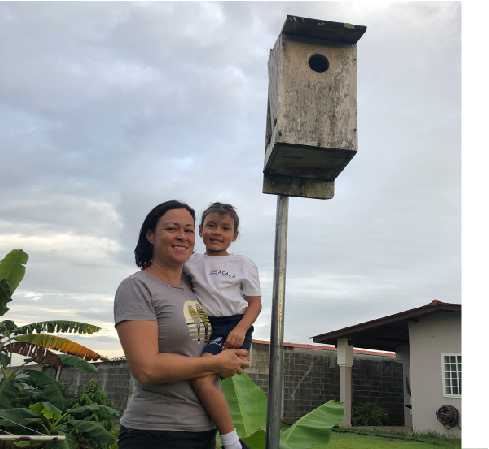Meet the Future of Global Conservation Leadership
Conservation Mentor: Paul Juergens
“My path to a life dedicated to helping birds of prey started in my childhood,” says The Peregrine Fund’s Paul Juergens. “I was imbued with a deep interest in nature by my family, but also by the rural part of Texas where I grew up. That interest led me to pursue degrees relevant to conservation, and along the way put me in contact with so many awesome people who took the time to share their knowledge and provide sage advice and direction when I needed it most. A good many of these people either worked for or had some connection to The Peregrine Fund; some of them I still work with today, and they continue to be inspirations and mentors to me.”
Today, Paul has been a part of The Peregrine Fund family for nearly 20 years. After spending time with our Northern Aplomado Falcon Restoration Program in southern Texas and our studies of Golden Eagles on White Sands Missile Range in New Mexico, he became our Vice President of Conservation for Domestic Programs earlier this year. But despite the overarching duties of his new position, he still remembers the guidance he received in his early career and looks to pay it forward.
“These days I spend a fair amount of time directing, planning, and advocating for our domestic programs and the organization as a whole,” says Paul. “But I still work with my colleagues to find ways to increase our capacity to help burgeoning biologists and conservationists through experience and mentorship. This approach is absolutely necessary to ensure lasting and sustainable outcomes for conservation.”
African Vulture Liaison Officer: Valerie Nasoita Sankok
“I grew up in the Maasai Mara in Kenya when the wildlife were so many,” says Valerie Nasoita Sankok, a Vulture Liaison Officer with The Peregrine Fund. Unfortunately, many species today are seeing their populations dwindle in this region, and this is especially true for African vultures. When predators such as hyenas or lions kill livestock, their owners sometimes retaliate by setting out poisoned carcasses—and the vultures find themselves collateral damage. Our research has shown that vulture populations have declined by up to 88% in Kenya since the 1970s. Without the critical clean-up services these birds provide, the entire ecosystem is threatened with upheaval.
Valerie, who holds a diploma in Wildlife Management from Kenya Wildlife Service Training Institute, has been trained in handling vultures and managing wildlife poisoning incidents, including first aid and treatment of poisoned vultures. Rapid response to these incidents by Valerie and our other Vulture Liaison Officers allows some poisoned birds to be saved and protects additional birds from being exposed to toxins. But this is only part of Valerie’s work; perhaps more critically, she seeks to prevent these poisoning events in the first place.
Valerie works diligently with communities throughout the region to help them understand the value of protecting wildlife and the dangers that using poisons poses for wildlife, livestock, and human health. “I hope that I can be one of the few who are educating and teaching the community about the benefits of the vultures,” says Valerie. “I want to encourage my community to stop poisoning and help us increase wildlife numbers once again.”
Your gift directly saves African vultures and so many other species around the world. Join our team in the fight to improve our planet for humans and wildlife alike. Make a year-end donation now and support conservation leaders like Valerie.
Indigenous Leader in Conservation: Darisnel Carpio
In 2002, when Darisnel was 12 years old, he met the Harpy Eagle Project team for the first time during an Environmental Education activity in his community of La Chunga in Darién, Panamá. Darisnel was inspired and started feeling a deep appreciation for the conservation of this wonderful species. In 2008, Darisnel was trained as a community biologist and became a member of our project because he wanted to change the negative attitude some local people had about the Harpy Eagle in the rainforest.
Darisnel spent his childhood exploring the forest, and, because of that, he understood the importance of protecting biodiversity. His desire to forward biodiversity conservation and the wellbeing of his local community drove him to pursue a college education. The Peregrine Fund supported him in this effort, which led to a Social Community Development degree. Now, Darisnel is helping indigenous communities to identify and implement sustainable activities to reduce deforestation, increasing the conservation knowledge of children and teenagers, and inspiring other young indigenous people to fulfill their dreams. At present, Darisnel is the father of three boys, and as a conservation leader, he teaches them to treasure birds of prey and biodiversity. In their free time, Darisnel and his boys help to care for and rehabilitate injured raptors that the environmental authority of Panama trust in our care.
Advancing Conservation Careers: Heather Morris
“I started out with The Peregrine Fund as an AmeriCorps volunteer at The World Center for Birds of Prey in Boise, Idaho,” says condor field biologist Heather Morris. “I worked mainly as an educator and handler for our avian ambassadors, but I was also able to make connections with people involved in different projects, including the California Condor propagation and field teams. This set up opportunities for me to volunteer with both projects. Two weeks before my internship was coming to an end, I was offered a position on the California Condor Reintroduction Program in Arizona, and the rest was history.”
Today, Heather is entering her second year as a valued member of our condor field crew. A talented photographer and videographer, she also helps run the team’s Condor Cliffs Facebook page and provides media for the livestream production of our annual condor release. We're grateful for her contributions, and it seems the feeling is mutual. “The Peregrine Fund has connected me with some of the most incredible and dedicated personnel in the raptor conservation world, and I've learned so much about the dedication and hard work that goes into this field. Our crew works long hours to ensure the health and success of the population of condors here in Arizona and Utah, and I consider myself lucky every day to be a part of it."
Peregrine Fund Community Scientists: Jenn Sinasac & Bianca
We like to think that conservation starts at any age—and for five-year old Bianca, it’s been a part of her life since birth. Bianca has been able to watch American Kestrels from her back porch all of her life. She helps her family monitor the birds' activity, identifies individuals, and has even corrected the observations of her parents on occasion. This budding scientist is the daughter of Jenn Sinasac, an operations manager and environmental educator with the Panama-based ecotourism company Whitehawk Birding.
Bianca has been immersed in the world of birds thanks to her mother’s work with both Whitehawk Birding and The Peregrine Fund.
“Back in 2008–2009, I worked as volunteer field staff on the Harpy Eagle program in Panama, and then for a field season with the Orange-breasted Falcon release in Belize, both great experiences with The Peregrine Fund,” she explains. Jenn’s passion for conservation informs her work today, helping the community understand the importance of habitat restoration and protecting endangered birds of prey.
Jenn and her family still remain connected to The Peregrine Fund as community scientists, having contributed data from their backyard kestrel nest box to our American Kestrel Partnership (AKP) since 2018. As one of the AKP’s few active partners in Panama, the family’s observations provide critical insight into kestrel breeding behavior in the region, and their efforts have the potential to benefit future conservation far beyond the AKP.
